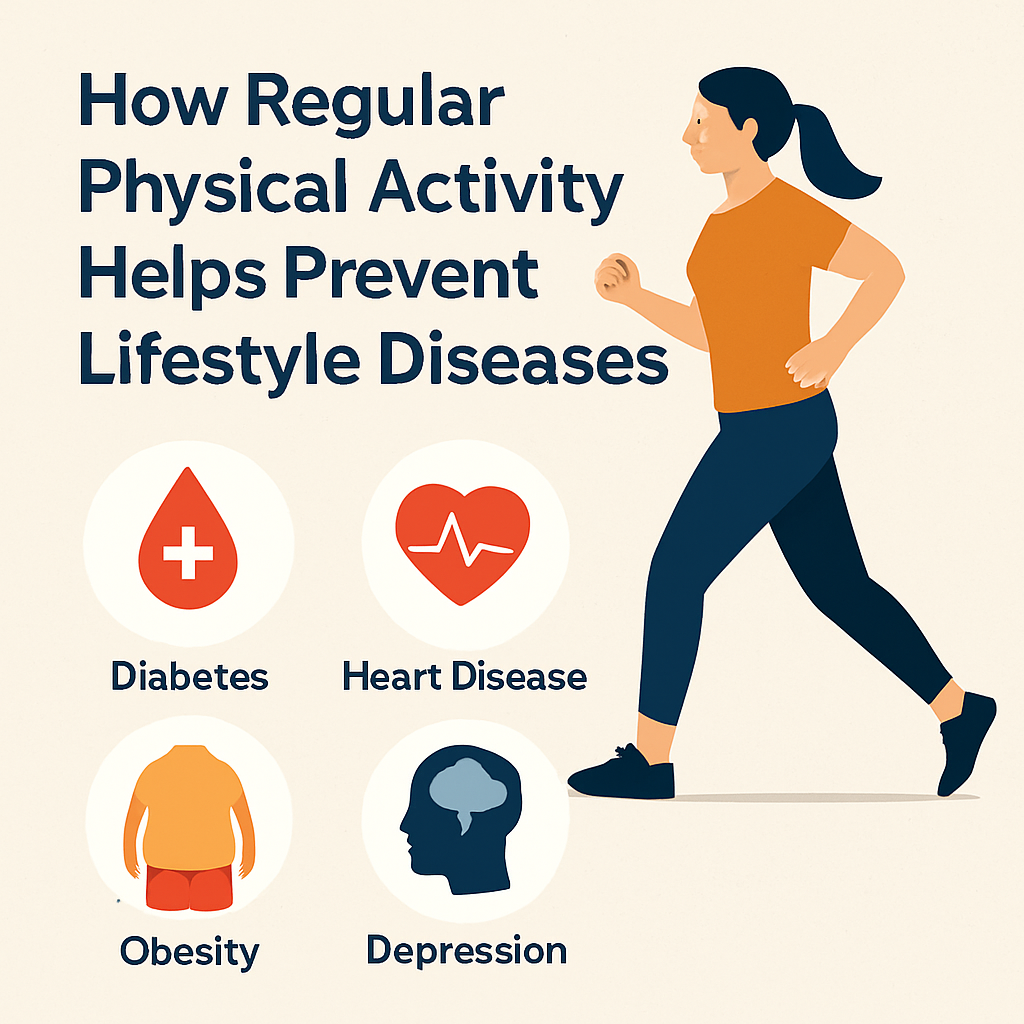
How Regular Physical Activity Helps Prevent Lifestyle Diseases?
Share
In today’s fast-paced world, lifestyle diseases like obesity, diabetes, hypertension, and heart disorders are rising at alarming rates. According to the World Health Organization (WHO), more than 60% of global deaths are caused by lifestyle-related illnesses.
The good news? Most of these can be prevented or managed through regular physical activity. Exercise isn’t just about fitness—it’s about disease prevention, improved mental health, and longevity. In this blog, we’ll explore how staying physically active can significantly reduce the risk of major lifestyle diseases, supported by insights from Harvard Health, the American Heart Association (AHA), and other credible medical sources.
1. The Rising Threat of Lifestyle Diseases
Sedentary routines, processed food consumption, and stress are major contributors to modern health challenges. Studies from The Lancet and CDC reveal that adults who spend more than 8 hours sitting daily are 15–20% more likely to develop chronic diseases. These “silent killers” develop slowly but have long-term effects on overall health and quality of life.
2. How Physical Activity Protects You
Exercise works as a natural medicine for the body. Harvard Medical School reports that just 150 minutes of moderate exercise per week can:
- Reduce Type 2 Diabetes risk by up to 58%
- Lower heart disease risk by 35%
- Improve blood pressure and cholesterol levels
- Enhance mood and sleep quality
This means even a 30-minute brisk walk, five times a week, can lead to significant improvement in metabolic and cardiovascular health.
3. Exercise and Mental Health Connection
Regular physical activity also reduces anxiety and depression—two common companions of lifestyle diseases. The National Institute of Health (NIH) found that exercise boosts serotonin and dopamine, promoting emotional well-being and reducing stress-induced inflammation, which often triggers chronic illness.
4. Best Forms of Physical Activity
You don’t need an expensive gym membership. The key is consistency over intensity. Effective activities include:
- Walking, jogging, or cycling (aerobic benefits)
- Strength training or yoga (muscle and joint health)
- Sports and recreational activities (social and mental health benefits)
Combining these ensures both cardiovascular and muscular strength, leading to holistic well-being.
5. Making Fitness a Lifestyle, Not a Task
To prevent lifestyle diseases, physical activity must become a daily habit. Simple changes like taking stairs, walking meetings, or home workouts can make a big difference. Wearable devices and fitness apps can also help track progress and keep motivation high.
Want to live longer, feel stronger, and stay disease-free? Start small—walk today, stretch tomorrow, and make physical activity your lifelong ally.